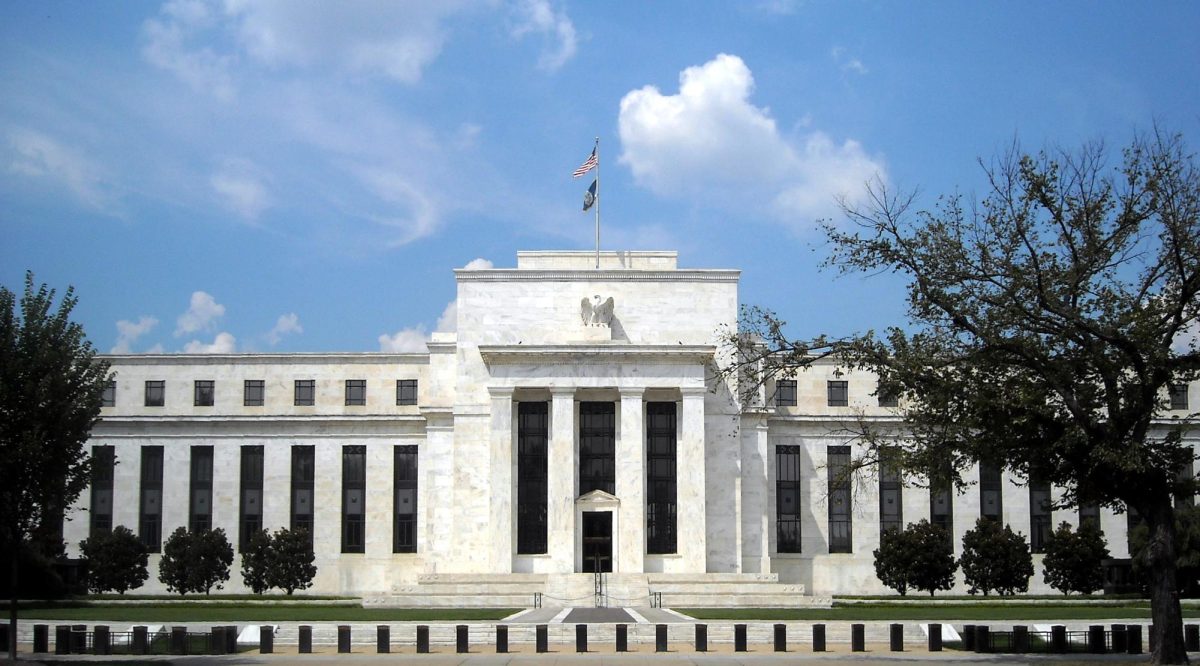Commercial and regional banks kicked off the third-quarter earnings season on Oct. 11 by topping earnings expectations, resulting in record stock levels not seen since before the 2023 regional banking crisis. Following the Federal Reserve’s half-point interest rate cut in September—and the signaling of more rate cuts—analysts and investors adjusted their earnings expectations downward because of its effects on net interest income and deposit costs.
A decrease in interest rates lowers the deposit costs for banks—interests paid to depositors holding money in accounts—leading to a decrease in net interest income, which is the key driver of profitability for lenders.
JPMorgan Chase & Co. showed a 2% decline in net income totaling $12.9 billion and a 3% increase in net interest income, equating to $23.5 billion, over the past year. In contrast, Wells Fargo & Co. saw an 11.3% and 10.8% decrease in net income and NII, translating to $5.14 billion and $11.69 billion respectively.
JPMorgan CEO Jamie Dimon acknowledged a strong earnings report but emphasized that the bank is awaiting updates from regulators on Basel III Endgame and believes new capital requirement rules can strengthen the financial system without harming the overall economy.
“We believe rules can be written that promote a strong financial system without causing undue consequences for the economy,” Dimon wrote in the earnings report. “Now is an excellent time to step back and review the extensive set of existing rules—which were put in place for a good reason—to understand their impact on economic growth, the viability of both public and private markets, and secondary market liquidity.”
Wells Fargo CEO Charles Scharf expressed that the bank’s top priorities are risk management and control but emphasized that the bank is focused on diversifying its revenue streams, noting that its “earnings profile is very different than it was five years ago.”
Bank of America Corp. reported decreases in net income and NII of 12% and 2.9%, respectively, equating to $6.9 billion and $14.1 billion. Similarly, Citigroup Inc. experienced a decline in both metrics, which amounted to 8.6% and 3%, respectively.
Furthermore, top investment banks such as Goldman Sachs Group Inc. and Morgan Stanley released stronger-than-expected results with a surge in investment banking deal-making fees. Goldman Sachs netted a 45% increase in net income, a 70% increase in NII, and a 20% increase in investment banking fees. Morgan Stanley delivered a 32% increase in net income, an 11% increase in NII, and a 56% increase in investment banking deal-making fees.
“We are seeing increased client demand for committed acquisition financing, which we expect to continue on the back of increasing M&A [mergers and acquisitions] activity,” Denis Coleman, chief financial officer at Goldman Sachs, said in the earnings call. “Overall, our investment banking backlog rose quarter-on-quarter driven by advisory.”
Despite mixed results across net income and NII, analysts and investors were optimistic about the quarter’s results as capital market activity picks up, banking regulation eases, and the Fed’s interest rate-cutting cycle begins. “Almost across the board results have been better-than-expected and the stock prices have reacted accordingly,” Jason Goldberg, managing director and senior equity analyst following the U.S. large-cap bank industry, told Bloomberg.
“It was clearly a strong quarter for markets in general, equity markets were up, fixed income markets were up, and the banks were a beneficiary of that.”
Since the 2023 banking collapse, virtually all banks have been bracing for loan defaults by increasing their provisions for credit losses. Except for Wells Fargo, banks continued to raise their provisions for credit losses each quarter. However, across the board, delinquency rates have slightly increased and consumers have continued to borrow on credit cards but paid off slower than anticipated, signaling that consumers are under pressure.
Moreover, banks are cautious about how Basel III and its regulatory requirements will impact business segments, but they are better off than if they were under the previous proposal, which saw a 19% capital requirement.
Brian Moynihan, chief executive officer of Bank of America, cited that Bank of America will benefit from the new proposal but emphasized caution, noting that the bank is waiting for “something that’s a little more detailed” before it gives estimates on capital return strategies.
“In the end of the day, we have excess capital based on estimates of the old one [old Basel III proposal]. So yes, it would be at the margin,” Moynihan told analysts in the earnings call. “But remember that at the end of the day we are sending capital back to shareholders because of the fact that the franchise generates activity without using a ton of capital and grows its loans, its deposits, the earnings, et cetera.”
Categories:
Banking sector surpasses earnings expectations despite uncertainty
October 28, 2024
0
More to Discover








